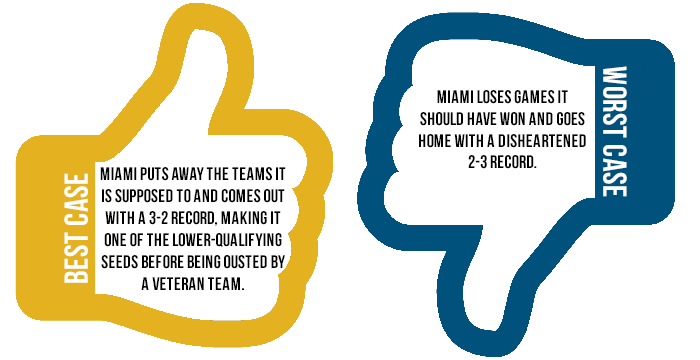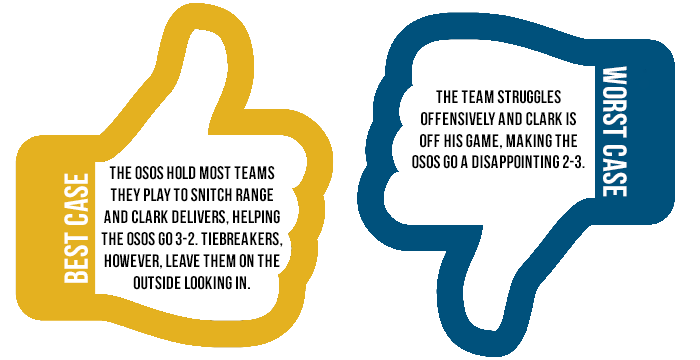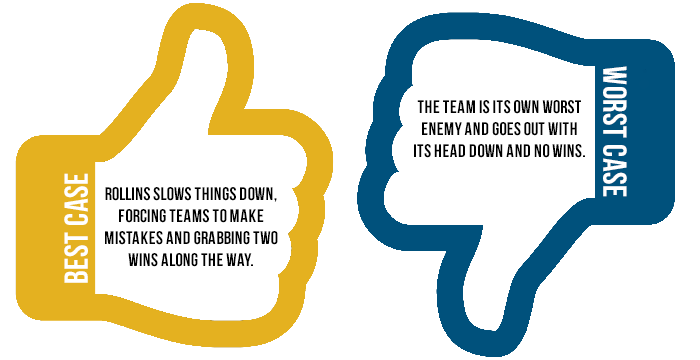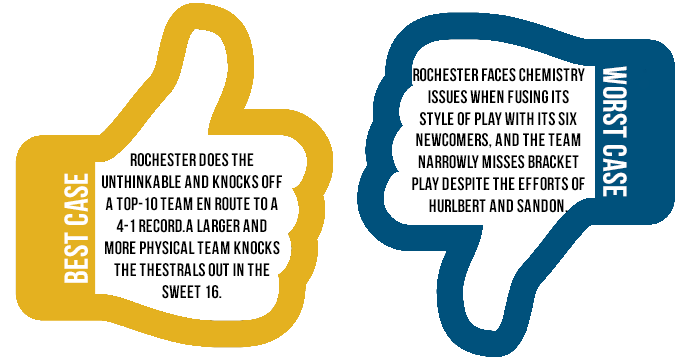Antwerp QC, Much of Belgian Core, Leaves Competitive Quidditch
Rock Hill Roll Call is your in-depth guide to the 80 teams that will compete for the title of World Cup 8 Champion. We’ve reached out to writers and analysts all over the country to bring you the lineups, strategies, focal points and aspirations of each and every attending team. Whether you are looking for a leg up on the competition or just want a detailed preview of the sport’s main event, this is the place for you.
 By Sean Pagoada
By Sean Pagoada
University of Miami has found great success within its own region for most of the program’s existence. This success has been foreshadowed, however, by the play of individuals who the whole team rallies around. While rebuilding this year, Miami stayed relevant because of key players such as captain and beater Shannon Moorhead and chaser Bernardo Berges. However, the players that can really push this young Hurricanes squad to that next level are its male beaters.
When the beaters are on their game, Miami looks like a complete team. On the other side, if they are not playing too well, the whole team’s frustrations lead to misplays and penalties.
When pushing opponents out of range, the beaters are very calm and level-headed. But when the game is going to be decided by a grab, they seem to lose their ability to communicate and their play style begins to tank.
Prior to the snitch being released in the South Regional Championship semifinal match against College of Charleston, the Hurricanes were up 20 points. Though they seemed to be in control of the game, Miami could not put the Cougars away. The longer the match went on and the longer the snitch was on pitch, the more the penalties and unanswered goals against Miami piled up. When the snitch was finally caught, Moorhead was about to get her shot off to beat Charleston’s seeker, while her beater partner was serving time in the penalty box.
The male beaters will need to step up in order for Moorhead to be able to play her game rather than having to make up for their mistakes. If Miami wants to show up at World Cup, its male beaters, who have so much potential, need to be reigned in.
 By Anonymous
By Anonymous
The Hurricanes transitioned from last year’s huge turnover with some minor bumps but have retained a style of play reminiscent of Miami teams of the past. Like many teams, Miami’s offense is set upon its defense. Team USA beater Moorhead leads the Hurricanes’ defense along with great off-ball defenders such as Colter Lasley, Bridgette Foster and Berges. The pressure that Moorhead and Berges put upon opposing ball-carriers will lead to passes with a ton of hang-time and result in easy interceptions and transition goals for this team.
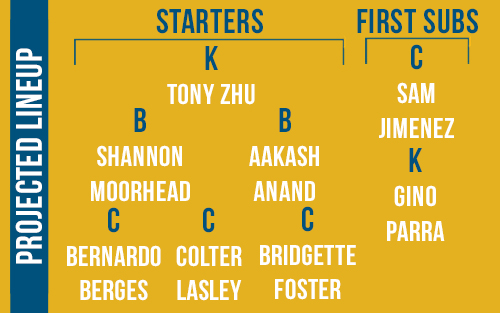 For teams that enjoy a fast-paced game, be careful not to play into Miami’s hands and get run off the pitch. Keeper Tony Zhu leads this fast-paced offense, running it like a point guard does in basketball. Zhu is able to dish sweet alley-oops to Lasley, as well as run some well-drawn plays under coach German Barrios.
For teams that enjoy a fast-paced game, be careful not to play into Miami’s hands and get run off the pitch. Keeper Tony Zhu leads this fast-paced offense, running it like a point guard does in basketball. Zhu is able to dish sweet alley-oops to Lasley, as well as run some well-drawn plays under coach German Barrios.
When digging deeper into the roster, you will find keeper Gino Parra, whose long shots and well-timed assists lead to a versatile tough-to-cover player. Parra is often paired up with chasers Tyler Walker and Tyler Sutherland, both of whom provide a sturdy on-point defense, opting to switch roles depending on the opposing ball carrier. Chasers Sam Jimenez and Jess Daly are great outlets on offense as well, typically outplaying opposing defenders for a quick catch-and-release shot. Beater Morris will typically hit the pitch later in the game, but once he is in, his presence is immediately felt by opposing beaters, who will feel a great pain once knocked to the ground due to Morris’ 1.5 play. If a team finds itself out of range once the snitch is on pitch, it will take a miracle to quell this storm.
 By Tad Walters
By Tad Walters
The Osos de Muerte are arguably one of the best B-teams in the country. Building off a disappointing first season last year, the Osos have made a complete turnaround, holding some big-name teams to close games.
Baylor University’s highly-spirited, second squad has kept teams such as Loyola University and Oklahoma State University in snitch range, while beating teams such as Texas A&M University, Tribe Quidditch and Sam Houston State University. The Osos do not possess an offensive presence that blows teams out of the water; rather, they manage to stick around just long enough to make a move at the end. In the eight games they have had in snitch range this season, the Osos have come out on top in five and brought two of them into double overtime, ending both with a snitch catch.
The astounding success the Osos have had this season stems from their strategic beating game paired with their talented seeker, Cordell Clark. Blake Stroncek provides the most offensive power for the Osos’ beating game, while Spencer Stratman has a killer instinct with his bludger, using long-range beats that hit more often than not. This team’s ability to hold opponents in snitch range, draw an overtime and catch the snitch again is terrifying.
If you are on a team that finds itself in overtime with the Osos de Muerte, you will not win survive.
 By Anonymous
By Anonymous
Much like their varsity team, the Osos de Muerte do not have a very complex offense. They score most of their points on drives or one-pass plays. If a team is playing staunch enough defense, the Osos struggle offensively. However, their defense is as formidable as ever, playing a sloppy-yet-gritty Baylor zone.
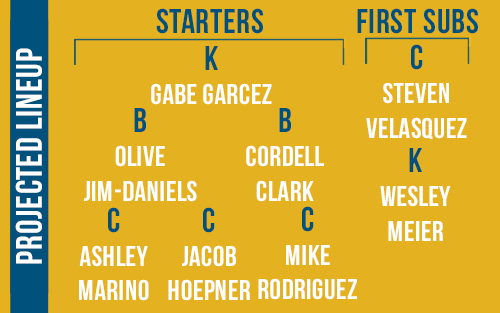 These players make more hits than their varsity team, but in pursuit of contact sometimes lose their positioning in the zone, leaving them susceptible to being scored on easily. Gabe Garcez bolsters the Osos’ quaffle game, making huge plays on offense and defense, while Jacob Hoepner makes big moves on offense as a passing option with the ability to finish at the hoops.
These players make more hits than their varsity team, but in pursuit of contact sometimes lose their positioning in the zone, leaving them susceptible to being scored on easily. Gabe Garcez bolsters the Osos’ quaffle game, making huge plays on offense and defense, while Jacob Hoepner makes big moves on offense as a passing option with the ability to finish at the hoops.
When playing the Osos De Muerte, it is important to play methodically and make smart goals. However, if you play too slowly and too methodically, you might find yourself in a snitch-range situation, which is the last place you want to be when playing this team that calls itself the “Bears of Death.” Their seeking and on-snitch beater game is so clutch that the best way to beat the Osos is to stay out of range and not even give them a chance to pull the snitch.
 By Sean Pagoada
By Sean Pagoada
Rollins College Quidditch Club, formerly known as Rollins College, is a community team consisting of players mostly from Rollins, Eastern Florida State College and Florida Atlantic University. With players coming from different programs and having no practice time together, it is easy to see why this team must come together under the same mindset if its players are to have a respectable performance at World Cup. This quidditch club seems to come into games with a different attitude depending on the reputation of the opposing team. The end results? Wins coming against non-qualifying teams, save for one against University of South Florida, and a long list of losses, half of which should have been wins.
The team also suffers in the transition. On offense, Rollins often fail to score against teams that can hit–and there should be plenty of those at World Cup. On the defensive side, the team brings the same lax attitude when attempting to stop opposing ball carriers.This squad overly relies on its beaters to stop opposing drives, and it will bleed goals when a 1.5 attempt is presented to it. All of these problems are influenced by leadership on and off the field, so someone needs to step up and rein in this group of different personalities. When things go awry, the team begins to crumble under the pressure.
 By Anonymous
By Anonymous
Rollins prefers to run a slower, methodical game, opting to run a three-person offense in front of the hoops with a lone chaser behind the hoops. Keeper Mike Bourgault and chaser Jonathan Nettles are the primary ball handlers. Bourgault prefers a pass-first method, having the team move the ball around the hoops until there is an opening for a mid-range shot. Nettles opts to penetrate a defense while being an effective bludger-blocker and looks to throw alley-oops to teammate Andrew Monast. Bourgault and Nettles run a decent 1.5 with beater Nick Behling, but do not take advantage of it as often as they could.
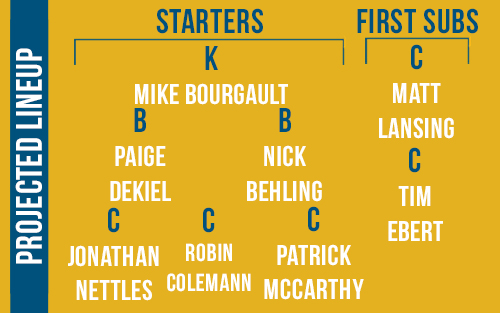 On defense, when holding bludger control, Behling focuses on opposing offensive beaters while Paige DeKiel concentrates on the quaffle. The quaffle players typically stick to man-to-man defense, as well as gang tackling when possible. Already their best offensive off-ball threat, Monast is also the biggest threat on defense, always looking to pick off passes that hang for too long. Rollins also recently acquired chaser Jack Starr from Florida’s Finest. Starr was the Swiss Army knife on defense for Florida’s Finest, and has recently expanded his repertoire on Rollins. At the South Regional Championship, Starr was seen beating for the team as well as stepping in at seeker. This team will need to play to its strengths as well as learn to make in-game adjustments come April if it is to make some noise.
On defense, when holding bludger control, Behling focuses on opposing offensive beaters while Paige DeKiel concentrates on the quaffle. The quaffle players typically stick to man-to-man defense, as well as gang tackling when possible. Already their best offensive off-ball threat, Monast is also the biggest threat on defense, always looking to pick off passes that hang for too long. Rollins also recently acquired chaser Jack Starr from Florida’s Finest. Starr was the Swiss Army knife on defense for Florida’s Finest, and has recently expanded his repertoire on Rollins. At the South Regional Championship, Starr was seen beating for the team as well as stepping in at seeker. This team will need to play to its strengths as well as learn to make in-game adjustments come April if it is to make some noise.
 By Mike Pascutoi
By Mike Pascutoi
The University of Rochester Thestrals became a Top-20 team overnight by fixing almost every major issue with its lineup. However, the key to Rochester’s success at Rock Hill is not the new bevy of talented former RIT players, nor is it its two scoring leaders from the fall–freshman Basem Ashkar and recent graduate Devin Sandon–who combined put up over 60 percent of the team’s goals this past fall. No, the key to this team’s success is Jack Venuti.
Venuti has flown largely under the radar as a beater for the Thestrals. Everyone, including occasionally his own teammates, have underestimated the effect he can have on a single game. He might be one of the five beaters in the Northeast and the most valuable player on the team, and his continued development as a player throughout the season has only solidified these claims.
Since his debut against RIT in 2012, Venuti has brought a fierce on-field aggression that compliments his astounding accuracy to produce what seems to be an unending series of drive-stopping plays. Venuti, the focal point of a Rochester defense built around intelligent beater play, was often the only bright point on the struggling Rochester team this past fall, with career-defining performances keeping Rochester competitive in close losses to Tufts University and Emerson College.
Despite the talent of beater partners Kyle Savarese, Lisle Coleman and Harry Clarke, none of them have the ability to play physically or athletically enough to match the physical beater game required to combat upper-tier and Southwest teams like Venuti can. However, his continuous struggles with fatigue and handling pressure will have to be mitigated to prevent the Swiss-style format from burning him out too early at World Cup 8. Without a rested Venuti at the top of his game, it will be hard for Rochester to continue its role as tournament upstart at World Cup 8.
 By Anonymous
By Anonymous
You will notice a lot of familiar names in this article from the preview article for RIT. That’s because, frankly, this team is no longer the University of Rochester squad we saw this past fall. At best, World Cup will be a preview for next year’s Rochester United squad, which will be made up of the best graduates from the Rochester area. At worst, it will be a cover for the Rochester’s six recent transfers from RIT to steal the spotlight from their new teammates.
In place of freshman phenomenon Ashkar, Shane Hurlbert will step into the starting lineup as keeper, effectively becoming the most dangerous player on the team. With Hurlbert, Ashkar and former RIT backup Aaron Pinzer, the Thestrals will bring a three-headed monster of a keeper line to World Cup 8 that will consistently cause matchup problems to all except the most athletic teams.
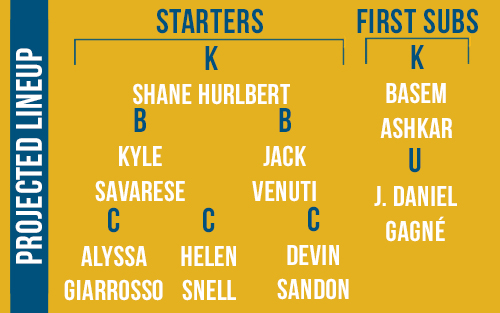 A beater core, already fiercely underrated, added the undersized but aggressive Savarese to their roster from RIT, an arguable offensive upgrade but a serious defensive upgrade over recent graduate Alex Venuti. Pairing Savarese with Venuti or Clarke, the Thestrals can now field a two-male beater set that can control the field against almost any team in the country. This is not to diminish their talented female beaters, Anna Parker and Coleman, both of whom couple excellent field awareness with amazing on-pitch self-control.
A beater core, already fiercely underrated, added the undersized but aggressive Savarese to their roster from RIT, an arguable offensive upgrade but a serious defensive upgrade over recent graduate Alex Venuti. Pairing Savarese with Venuti or Clarke, the Thestrals can now field a two-male beater set that can control the field against almost any team in the country. This is not to diminish their talented female beaters, Anna Parker and Coleman, both of whom couple excellent field awareness with amazing on-pitch self-control.
The only real weakness–if you could call it that–for the Thestrals would be their offensive chaser depth. Behind Sandon, Snell and J. Daniel Gagné, there are no real playmakers that can complement their incredibly dynamic keepers. However, what they do not have in offensive firepower they will make up for on defense, as Rochester’s chasers are both incredibly aggressive defensively and quick enough to outrun opponents in transition.
The Thestrals must not let their newfound talent lull them into a false sense of security. With the almost eternal winter affecting their ability to both practice and play against quality competition, the Thestrals will need to spend the spring developing chemistry within their team. Furthermore, they will have to continue developing a set offense to make up for their long-term dependence on the transition to score a substantial portion of their goals.
Beating Rochester means keeping them out of snitch range; they are 6-1 in SWIM situations in the last two World Cups and are heavily dependent on strong seeker play to force upsets. Furthermore, strong point defending is necessary to neutralize the versatility of Hurlbert and Ashkar, while aggressive defensive beating may be necessary to neutralize Rochester’s tendency of collapsing defenses using offensive beating. A lot of variables will affect Rochester’s performance come April, but with their history of close games, any team with an efficient snitch-on-pitch strategy can take down this team.
Photo illustration by Amanda Dallas. Photos by Matt Dwyer (left) and Nicole Harrig.
Archives by Month:
- May 2023
- April 2023
- April 2022
- January 2021
- October 2020
- September 2020
- July 2020
- May 2020
- April 2020
- March 2020
- February 2020
- January 2020
- December 2019
- November 2019
- October 2019
- August 2019
- April 2019
- March 2019
- February 2019
- January 2019
- November 2018
- October 2018
- September 2018
- August 2018
- July 2018
- June 2018
- April 2018
- March 2018
- February 2018
- January 2018
- November 2017
- October 2017
- July 2017
- June 2017
- May 2017
- April 2017
- March 2017
- February 2017
- January 2017
- December 2016
- November 2016
- October 2016
- September 2016
- August 2016
- July 2016
- June 2016
- May 2016
- April 2016
- March 2016
- February 2016
- January 2016
- December 2015
- November 2015
- October 2015
- September 2015
- August 2015
- July 2015
- June 2015
- May 2015
- April 2015
- March 2015
- February 2015
- January 2015
- December 2014
- November 2014
- October 2014
- September 2014
- August 2014
- July 2014
- May 2014
- April 2014
- March 2014
- February 2014
- January 2014
- November 2013
- October 2013
- September 2013
- August 2013
- July 2013
- June 2013
- May 2013
- April 2013
- March 2013
- February 2013
- January 2013
- December 2012
- November 2012
- October 2012
Archives by Subject:
- Categories
- Awards
- College/Community Split
- Column
- Community Teams
- Countdown to Columbia
- DIY
- Drills
- Elo Rankings
- Fantasy Fantasy Tournaments
- Game & Tournament Reports
- General
- History Of
- International
- IQA World Cup
- Major League Quidditch
- March Madness
- Matches of the Decade
- Monday Water Cooler
- News
- Positional Strategy
- Press Release
- Profiles
- Quidditch Australia
- Rankings Wrap-Up
- Referees
- Rock Hill Roll Call
- Rules and Policy
- Statistic
- Strategy
- Team Management
- Team USA
- The Pitch
- The Quidditch Lens
- Top 10 College
- Top 10 Community
- Top 20
- Uncategorized
- US Quarantine Cup
- US Quidditch Cup



